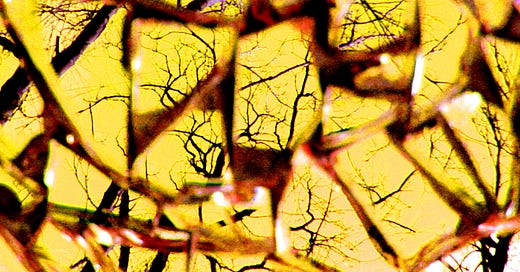Hello, Friends,
It’s time for our first Terraphilia Book Club meeting! Before we dive into Finding Beauty in a Broken World with a book summary and discussion questions, a personal note: I am moving in three weeks. (Eeek!) My new place is a small and rustic rental house on a hill with a long view outside the small down of Paonia, Colorado.
So my life is going to be a bit insane for a while, because among other things, I have to pack up my house, rent a storage unit and find movers.
I will still post every week and respond to comments, but I may be a mite distracted until I get settled again. So please bear with me, and hold me in the light in this profound transition as I search for my heart’s home.
Thank you!
I can’t imagine a book more relevant to these times and to what practicing terraphilia can do for healing and restoring this divided time than Terry Tempest Williams’ Finding Beauty in a Broken World. Written in the aftermath of the fall of the Twin Towers and 9/11, Finding Beauty is, as Tempest Williams writes, her attempt to find meaning and healing in a world that felt irretrievably broken.
We watched the towers collapse. We watched America choose war.
The peace in our own hearts shattered.
How to pick up the pieces?
What to do with these pieces?
I was desperate to retrieve the poetry I had lost.
How do we pick up the pieces? And what can we do with them when we do?
Those questions resonate now, almost 25 years later, in a world that feels just as broken at it did after the horrifying events of 9/11. And today, the values we thought our democracy held sacred are under assault.
Book summary
Finding Beauty in a Broken World chronicles Tempest Williams’ quest for a way to grasp a world shattered by an act of terrorism took thousands of lives and was answered by a war that destroyed the homes and communities and lives of thousands more. In her search for a way out of despair and into healing, Tempest Williams follows her own mystical leading: she asks the universe for a word, and hears in response: “mosaic.”
Hence the first part of the book, where Tempest Williams delves into the history of mosaic-making, which of course is using what is broken—bits of glass, gold, pottery and other materials—to create images, often religions ones. In order to learn how the broken is transformed into the sacred, she travels to Ravenna, Italy, to take a mosaic-making workshop and to see some of the most sublime mosaics in the sacred sites there. And there Tempest Williams confronts the beauty in imperfection, and also hears these words from Luciana, her instructor, “Making mosaics is way of thinking about the world." And, “Mosaics are created out of community.”
Those words are the bridge to the second part of the book, a look at community, language and ecological genocide through the lens of Utah prairie dogs, endangered rodents who live in tight relational communities, speak a complex language and are routinely killed in horrifying ways to keep them from interfering with humans’ use of the land.
This section of the book is an object lesson in two things: what we learn intimately very often changes our lives because it changes our perspective on the world, and writing about other species from direct observation can be as riveting as the storyline in any novel. Also, community is a universal concept, not limited to humans.
After studying Utah prairie dogs (“prayer dogs”) and their precarious state as “refugees on unfamiliar land,” Tempest Williams concludes,
They are sounding their alarm calls now, recognizing us as the animals we are, unconsciously walking toward the sharp-edge of extinction.
Those alarm calls to humanity segue to the third part of the book, which chronicles Tempest Williams’ time in Rwanda as “scribe” to a team led by her artist friend, Lily Yeh, who was charged with creating a memorial to the victims of the Rwanda genocide, where the bones of a million dead Tutsi people fill churches, cellars, holes in walls…. The bones are everywhere. The stories are horrifying. The survivors are broken, but living. How can Yeh and her small team help them make a memorial to the dead and the healing? How can Tempest Williams take in the horror and contribute something meaningful to the project?
Her time in Rwanda shakes the foundations of Tempest Williams’ faith, and also profoundly changes the course of her life in a way I won’t reveal here in case you haven’t finished the book. Out of almost unimaginable brokenness comes an opportunity for growth and healing of a sort Tempest Williams never imagined, and which continues to enrich her life to this day.
Book Discussion
Here’s my plan: I’ll pose some questions below for you to think about and respond to in the comments. Don’t try to respond to them all! Pick one or two questions that speak to you, or comment on something else entirely.
And take your time. There’s no need to respond right away. I’ll monitor the comments for the next few weeks. A month from now, I’ll post a summary of the discussion so far, and post another set of questions.
If you haven’t finished the book, don’t worry, I’ll focus on meta questions for now so we won’t give away the end.
Remember: this is a discussion, not a quiz. There are no “correct” answers. I’m (we’re) just interested in what you think, how you respond to the book, what you take from it. Also, please keep your comments respectful and constructive, especially when you are responding to each other!
Discussion questions:
More than any other Tempest Williams book, Finding Beauty in a Broken World has an unusual structure. Did you notice the way the book is put together as you were reading? What did you learn from the structure?
The book opens with an epigraph from TS Eliot’s poem, “The Waste Land,” one line of the poem on one page, and then rest of the stanza on the next. The first two two pages of Tempest Williams’ narrative are almost another epigraph, with a few scattered lines by Tempest Williams on one page, and a single line on the next (a mirror image in form of the TS Eliot epigraph). What do you think of this form? What does it say to you? (Here’s a hint: think fragmentation.)
Finding Beauty in a Broken World comes in three major sections, and the themes of those sections thread together through the book: mosaics, prairie dog communities and healing the wounds of the Rwandan genocide. How do these seemingly disparate subjects and sections relate to each other? Do they form a coherent “picture” for you?
Parts of the book are difficult to read, unvarnished descriptions of violence and death. Did you find yourself recoiling, skipping over or did you see them as integral to the point of the book? How would you treat these sections if you were writing?
Whether or not you have finished the book, what are you learning from it? And what do you think the point of weaving together these very different topics is?
Hit the comment button below and respond!
Blessings, Susan






I'm grateful you've found a home that puts you in the right setting for making more permanent plans!
I have read the book, but I'll make a comment about the beginning. I think using T.S. Eliot's words--and on multiple pages--prepares readers. I've heard Christina Baldwin talk about a "contract with the reader." The idea behind that is that the beginning of a book lets people know what to expect. Here, they should get that the author won't use a very traditional way to tell a story. Also, that line, "Once upon a time, we knew the world from birth" is what Tempest Williams believes, I think, even though it's Eliot's line. Even the use of "we" in Eliot's stanza helps her, I think. I believe she's using this to say that we all have some abandoned knowledge in common. She's not saying that the readers have a problem, which I imagine would make this kind of preachy. I think she may be using it to say that everybody, including her, has lost something in the world.
I have not read this book. However, I hope you are able to settle into a home that feels right for you soon.
It's not fun to have your belongings in storage and to stay in temporary rentals. That's how I lived when I was in the Northeast when I tried to relocate from Washington to Vermont. However, in your case, I think your home is just around the corner.